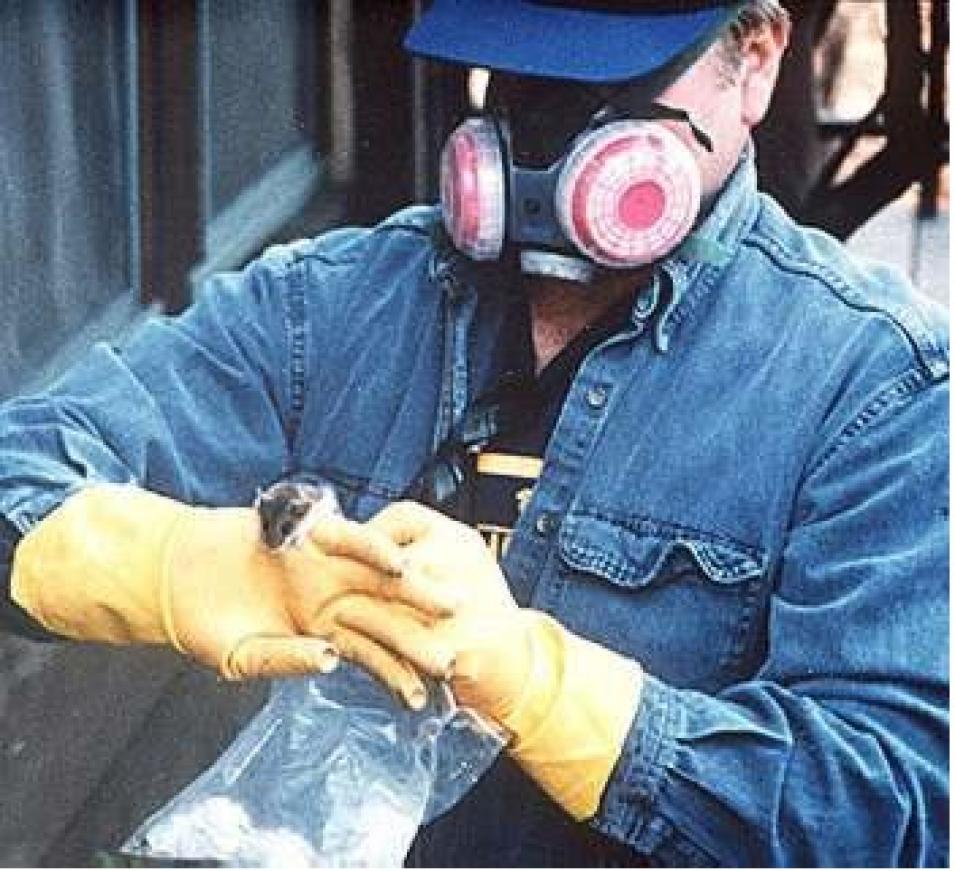Glass and fellow investigators started reviewing satellite images from 1992, the year before the outbreak. Early on, researchers hypothesized that the 1991-92 El Niño contributed significantly to the hantavirus outbreak by increasing precipitation. More precipitation meant more vegetation; more vegetation meant more mice. Yet, this hypothesis was based on data from just two study areas: the University of New Mexico's Sevilleta Long-Term Ecological Research Station, and Moab, Utah. Glass set out to test the hypothesis with a case-control study.
"If you know where people were when they got the disease, you can use satellite data to monitor the environmental conditions where the outbreak happened," said Glass. "But there's a problem. You could, for example, conclude that the area where people got sick has lots of trees. Does that mean being around trees helps the disease spread, or does it just mean that people like to have trees around their homes?" He explained that a case-control study is one in which the environment and habits of the people who become ill (cases) are compared to those who did not contract the disease (controls).
Glass and fellow researchers estimated precipitation at 28 case sites and 170 control sites during the springs of 1992 and 1993. They then compared those data to the previous six years' precipitation using rainfall records from 196 weather stations. They also examined Landsat Thematic Mapper satellite imagery collected the year before the outbreak to estimate the hantavirus pulmonary syndrome risk. Glass and his collaborators published the results of their study in the May-June 2000 issue of Emerging Infectious Diseases. What Glass found is that, while there is a relationship between precipitation and hantavirus, it's not as simple as previously thought.
Earth Science Information Partners
The Earth Science Information Partners (ESIP) is comprised of government agencies, national laboratories, universities, nonprofit organizations, and commercial businesses.
- Type 1 members distribute satellite and ground-based data sets, and standardized products derived from those data sets.
- Type 2 members provide data and information products, technology, and/or services to the Earth science community.
- Type 3 members are primarily commercial companies that develop Earth science tools.
The hantavirus risk map project used satellite data archived at LP DAAC. LP DAAC is a Type 1 member, as are all of NASA's DAACs. The IBM Watson Research Center is a Type 2 member.
For more information, visit the ESIP webpage.
"One of the complicating factors relates to remote sensing. In areas that are semiarid, like the U.S. Southwest, the satellite readings don't correspond well with the actual amount of vegetation. The images show both vegetation and bare soil, and depending on the soil type, you can get false readings," Glass said. "Another complicating factor is the vegetation. I visited the Four Corners region during the next El Niño in 1998 and 1999 and realized that disease risk doesn't depend on the vegetation, per se. Broad categories of vegetation exist for high- and low-risk areas, but it's not a simple matter of saying piñon juniper forest is high risk, or salt bush lowlands is low risk."
A crucial step in solving the puzzle, Glass said, is collecting ground truth data. He began overlaying risk maps from 1992 through 1998 to determine where the high-risk areas persisted, and he visited those sites with CDC researchers to learn more about them. "Mice might be fussier than we thought about where they live. The vegetation might look promising, but maybe the soil's too hard, so the mice can't burrow. Maybe there's not enough moisture in the soil. These are all things we have to figure out, and public health officials need remote sensing scientists to understand the nuances of the imagery."
Another key to understanding hantavirus risk is acquiring more data. "We don't have enough statistical power to say much about precipitation patterns yet," Glass said. "An additional problem is that the data could be contaminated with past outbreaks of the disease. I'm positive there were earlier cases that just weren't recognized." The CDC agrees. Earlier cases of the Sin Nombre virus have been found in stored tissue samples taken from people who died of unknown lung diseases before the 1993 outbreak. Now, the earliest known case of the Sin Nombre virus has been confirmed in a 38-year-old Utah resident who died in 1959.
Do public health officials pay too much attention to illnesses like hantavirus pulmonary syndrome? "We don't have that many infectious diseases in the United States, so even 30 or 40 people dying from something is pretty frightening," Glass said. "You could compare the Four Corners outbreak to the recent anthrax outbreak. Nobody knew where it was coming from or how many people would be affected. With hantavirus, we didn't even know what it was or how it spread. So the problem isn't that you've got huge numbers of deaths, it's that you have a lot of people who don't know whether or not they've been exposed."



